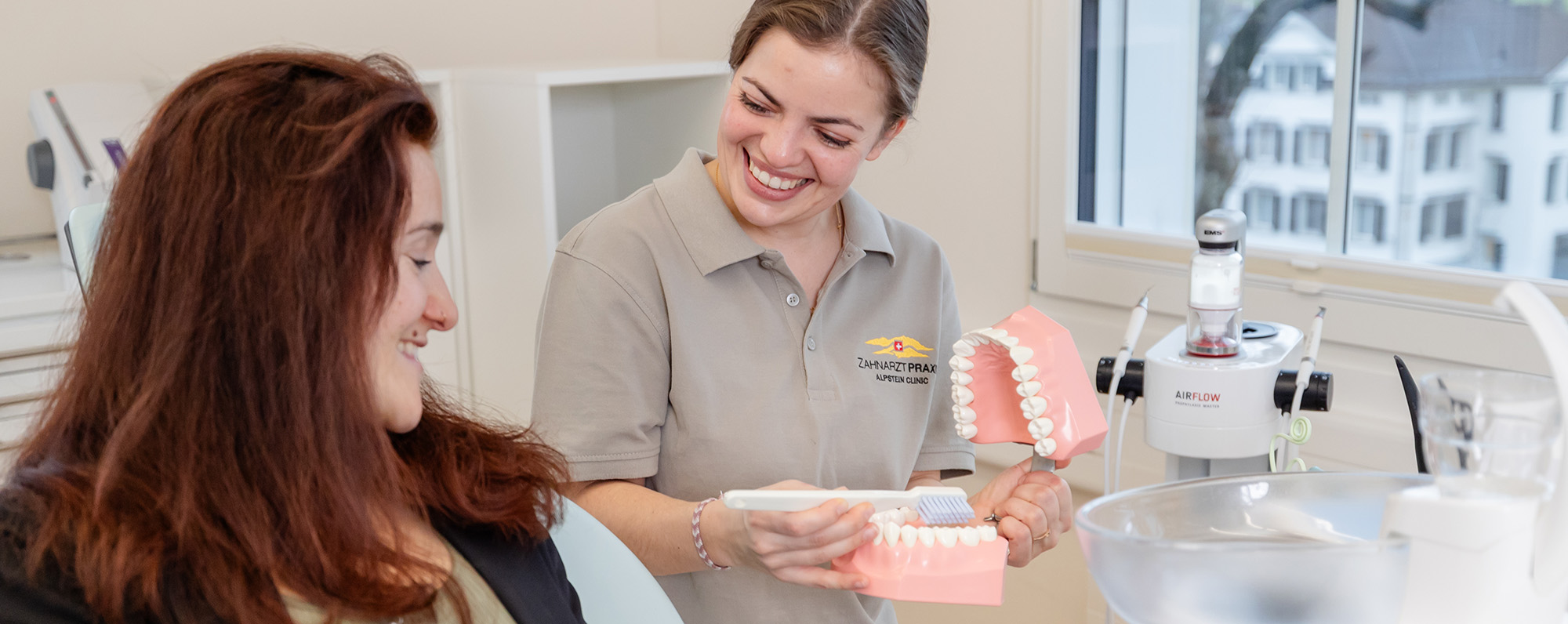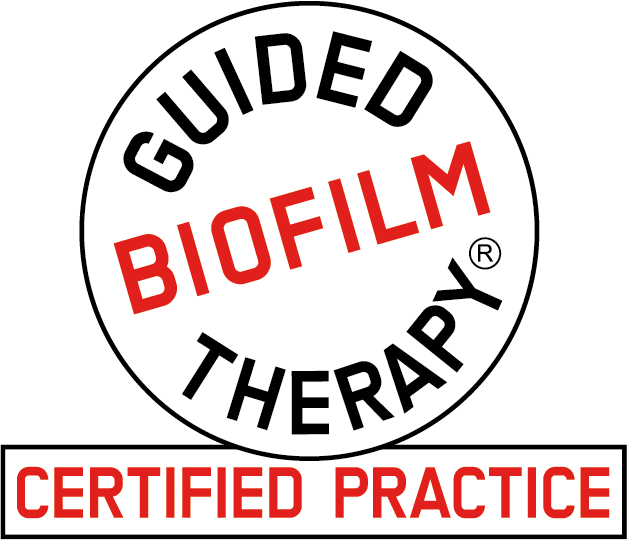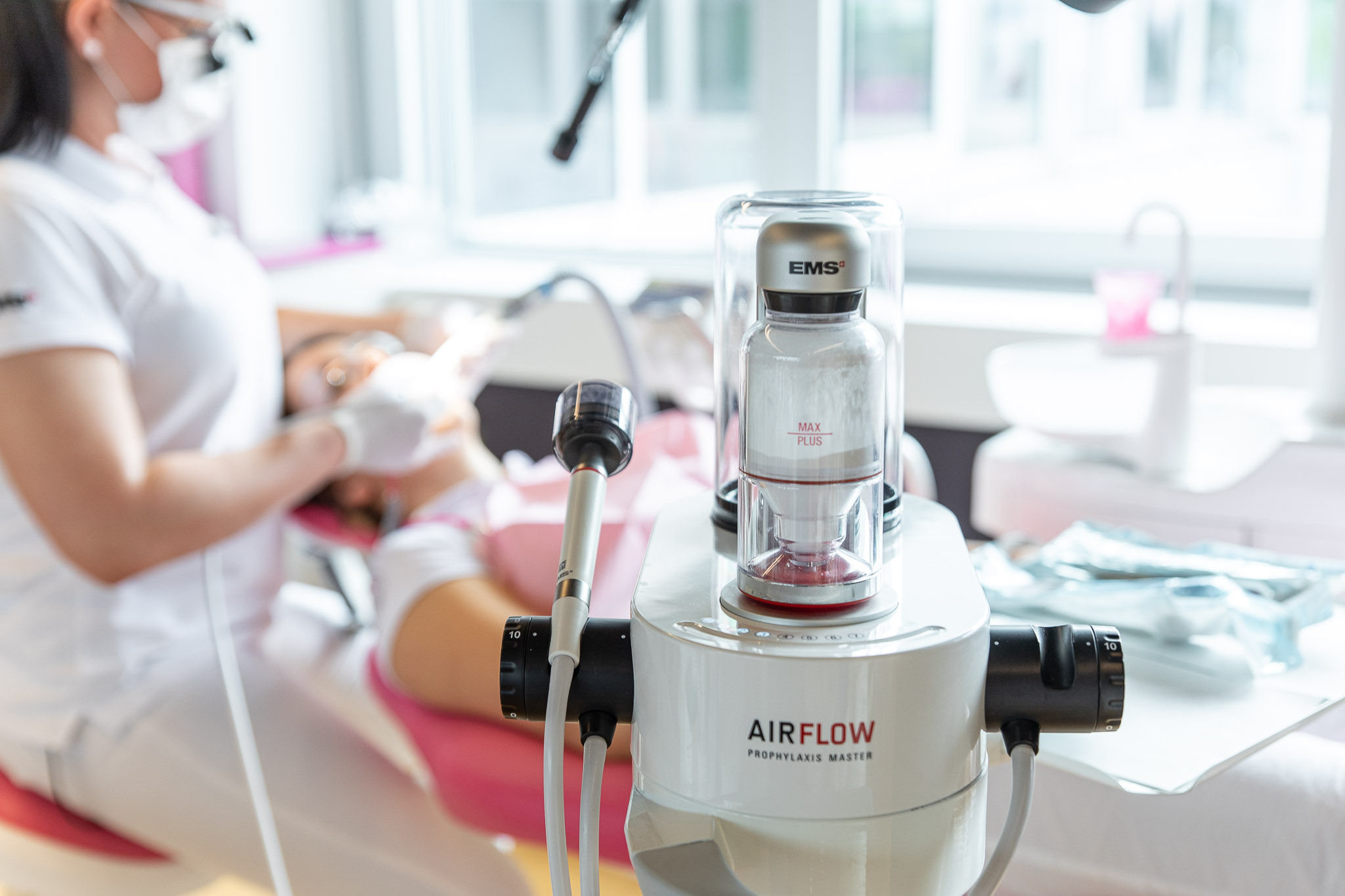Dental hygiene

Dental prophylaxis
Prevention is better than cure!
Optimal oral and dental care is an important cornerstone of whole-body medicine and holistic dentistry. Regular check-ups are important to prevent unnecessary “construction sites” from developing. It is often forgotten that our digestion also begins in the mouth. For example, severe gum or periodontal disease can weaken gastrointestinal health and lead to chronic intestinal inflammation. The reverse is also true; a chronic disease of the gastrointestinal tract can cause inflammation in the mouth. No dental filling, dental prosthesis, dental implant or denture is as resilient and resistant as a healthy tooth. Dental prophylaxis starts with the first milk tooth, as milk teeth are, among other things, placeholders for the permanent teeth that will follow. Take preventive measures to keep your own teeth for as long as possible – through regular professional dental cleaning and, of course, thorough daily cleaning at home.
Teeth and gums
A healthy mouth is full of bacteria – around 10 million per milliliter of saliva. Most of these bacteria are harmless and are important for our immune system.
Determination of oral health using molecular genetic test systems
We develop your individual dental care program
So-called molecular genetic test systems, which we use at the Alpstein Clinic, offer us this possibility. They not only provide an accurate picture of the bacterial ratio, but also allow us to develop a treatment plan tailored to your individual needs. The results help to determine medication and plan repeat appointments, and they also have a documentation function, i.e. they show changes in oral health over a longer period of time.
But even before major procedures, such as the insertion of implants, it is possible to check in advance whether the conditions are ideal for implementation and the success of the procedure is not jeopardized by existing bacterial infections. The analysis therefore helps to identify risks before irreversible damage occurs and costly treatments become necessary.
How exactly does this work?
Bad bacteria actively destroy periodontal soft and bone tissue, lead to inflammatory reactions and ultimately to the loss of natural teeth and implants. This is referred to as infection by periodontopathogenic marker germs. A simple swab provides the basis for a so-called marker germ analysis, which is then carried out. This provides information about the occurrence and concentration of several periodontopathogenic species and their affiliation to “bacterial complexes”. Only knowledge of the individual composition and level of the bacterial load enables diagnostically sound treatment and the planning of optimal individual therapy, so the analysis makes a significant contribution to therapeutic success. And last but not least, it helps to reduce the cost of dental prostheses through the main objective of preserving the patient’s own dental material.
The gentle, innovative dental prophylaxis
Guided Biofilm Therapy (GBT)

Let us introduce GBT to you in detail in the following sections and see why the concept is so different and special that we have been specially certified for it as a dental practice at the Alpstein Clinic. We look forward to hopefully welcoming you to our clinic soon for a prophylaxis using the GBT method.
The Guided Biofilm Therapy (GBT) protocol


GBT advantages
Making the biofilm visible
The problem with biofilm, apart from its damaging effect, is that it is almost invisible to the naked eye. In order to make the invisible visible, the teeth are stained as a first step in GBT therapy. This not only makes tartar visible, but also any bacterial plaque.
Gentle and painless cleaning without sharp instruments & polishing cup
Previously, teeth were cleaned by curettage of the root surface and the neck of the tooth using hand instruments. This was followed by polishing using a rubber cup and polishing paste.
Consistent quality standard of cleaning
GBT is a clinical protocol which, together with Swiss precision equipment, guarantees a consistently high standard of quality for your professional teeth cleaning.